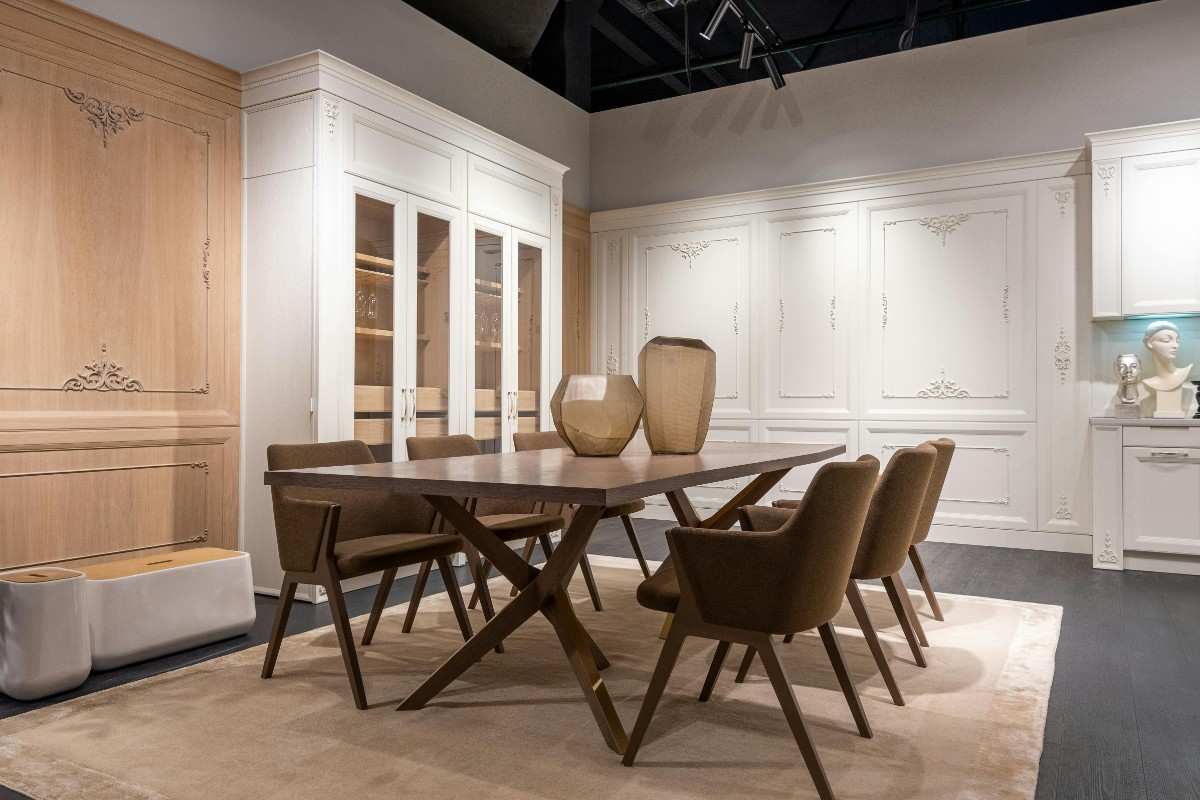Incorporating biophilic design in interior spaces has completely turned the tables on how we perceive spaces, and connected our homes to the natural world. What if your living room could change season with you? Go into seasonal biophilic transition zones, which involve introducing adaptable natural elements into your living space to create an element that represents the beauty and tranquility of the natural world during the whole year. Seasonal biophilic transition zones, the highlights of this article, are the principles, benefits, and how to do the right way for the living room.
A question arises: What are Seasonal Biophilic Transition Zones?
Adaptable design areas in your living room such as seasonal biophilic transition zones introduce the natural elements that adapt with your season. Materials, colors and textures that can swap or be replaced for seasonal changes are these zones that embrace flexibility. These spaces give a dynamic feel to your living room for you to have a fresh and inviting one.
Benefits of Seasonal Biophilic Transition Zoning
1. A Dynamic Living Environment
Transition zones mirror the natural shifts in our day and keep your living room vibrant and engaging. It promotes a more powerful relation with nature, and as a result, it does not become repetitive.
2. Improved Emotional Well-being
Exposure to nature decreases stress and increases mood, according to research. Seasonal elements are incorporated into these zones which enable outdoor experiences to remain indoors and lead to relaxation as well as mental well being.
3. Enhanced Aesthetic Appeal
Your living room aesthetic value is enhanced by seasonal biophilic transition zones. The elements of design continue to evolve keeping the space visually stimulating and engaging.
4. Eco-Friendly Design
Sustainable and seasonal like using dried flowers, reclaimed wood or natural fibers keeps the carbon footprint of your product to a minimum whilst celebrating nature’s cycles.
5. To push Mindful Living to encourage and provide pathways for the greatest possible support.
This concept of seasonal biophilic design uses your home to align you with the rhythms of nature as you find yourself forces into a more mindful state. With this, you’re nurturing yourself to have an appreciation for the seasonal changes and to be more of an intentional person.
Key Elements of Seasonal Biophilic Transition Zones
1. Natural Textured and Material
If you don’t want solely visual depth in your living room, incorporate bamboo, stone, rattan, etc. The materials featured can be adapted for seasonal variations.
2. Seasonal Greenery and Florals
If it’s a flower, then use a flowering plant that’s reflected the current season, or similarly with plants or foliage. For instance, choose fresh blooms in spring, greenery in summer, flame in autumn and evergreens in winter.
3. Seasonal Color Palettes
If cushions are something you use to do it, switch these out, alongside rugs or wall art; this time of year can easily be reflected to suit seasonal color schemes. Bring soft pastels for spring, rich meershaums for summer, warm earthy tones for fall, and cool white or blue tones for winter into the space.
4. Light and Shadow Play
He suggests adjusting lighting to match up with the mood of the season. In winter, use warm lighting for coziest or during the summer, use natural daylight for brightest and airiest.
5. Flexible Furniture Layouts
Go for modular furniture and be able to rearrange them within the season. In summer, open up seating to encourage the flow of socialization and in winter make cosy nooks for relaxing.
Seasonal biophilic transition zone in your living room: how to create it
1. Plan for Adaptability
Plan your transition zone that’s flexible enough. Another tip for successfully promoting a small business space is to use modular decor and furniture you can easily rearrange or update when a new item comes in.
2. Buy Multi Use Pieces!
Storage ottomans and reversible throws beneath your sofa (furniture that serves multiple purposes) help you transition season to season with ease.
3. Use Nature as Your Guide
Inspire yourself from the natural world. Look at what happens in your local environment, and try to include some of these things in a living room that you’re working on.
4. Embrace DIY Projects
Make seasonal decor using natural materials like pinecones, drift wood or dried flowers. Not only is this cost effective, but it also makes it personal.
5. Focus on Sustainability
Choose sustainable and eco friendly materials. Reuse and repurpose decor items to conserve decor waste and keep your design eco friendly.
Biophilic Transition Zones — Seasonal Inspirations
Spring
And to add fresh flowers like tulips or daffodils.
Not to mention, bring in pastel colored cushions and throws.
With sheer curtains you can maximize natural light.
Summer
Or you use tropical plants like ferns or palms.
(use bright and bold colors, like yellow, for instance, and turquoise)
Include cotton or linen or any other lightweight fabric.
Autumn
Dried flowers or branches.
Make your shades warm with orange, brown and deep red.
Use wool or velvet for a cozy feeling texture.
Winter
Include evergreen arrangements and piercones.
In particular, choose a neutral theme, accented in gold or silver.
Get yourself some warm lighting and candles and play along with it for a snuggly ambiance.
Your office is your home with this Style
The most transformative way to begin integrating seasonal biophilic transition zones into your living room is our way of ascertaining how you can create a dynamic and engaging space, whilst connecting you to nature. “I’ve always been interested in these types of zones: they make sense with the rhythms of the natural world, it supports mindfulness, well-being, and sustainability.” If you align your living space with the seasons, you allow for a home that changes and changes as nature does.
End Note
Connecting with nature’s cycles can be far deeper than just making your living room look good; it’s about the biophilic transition zones of seasons that can be embraced in your living room. These spaces — they adapt as the seasons change — encourage mindfulness, they reduce stress, and they celebrate the beauty of each season. Your living room does not really have to be diverse, it can indeed be one with nature’s timeless rhythm, either DIY or curated design elements.
FAQs
1. How are seasonal biophilic transition zones used?
It is adaptable space in a living space, which combines natural elements, changing with the seasons.
2. Can we create seasonal biophilic transition zones on a budget?
And yes, you can also use cost effective and sustainable materials, such as, dried flowers, driftwood, or repurposing existing decor for seasonal adaptations.
3. What are the pros of seasonal biophilic design?
Biophilic design creates both a seasonal sense of well-being and mindfulness, enhances aesthetics and foments a greater bonding with nature.
4. Which kinds of plants best succeed within seasonal transition zones?
For spring: choose plants that reflect the season: tulips; for summer: ferns; for autumn: dried branches; for winter: evergreens.
5. What can I do with lighting to incorporate it into seasonal biophilic zones?
In winter use warm light for coziness and in spring and summer use natural light for breezy, bright feel.
6. Are seasonal biophilic transition zones environmentally friendly?
Of course, when created with sustainable materials and with mindful practices, they help reduce waste and encourage eco friendly living.




